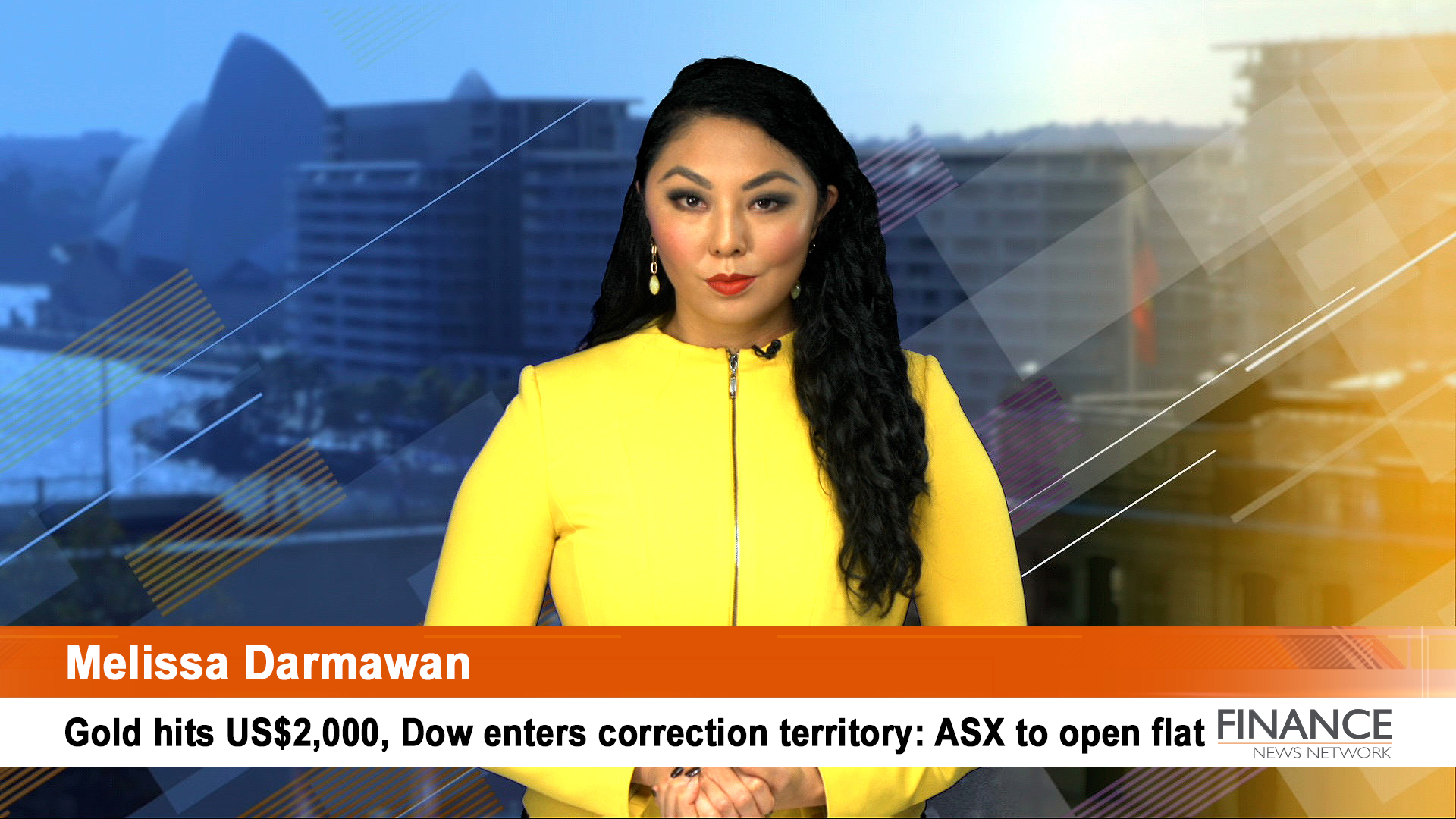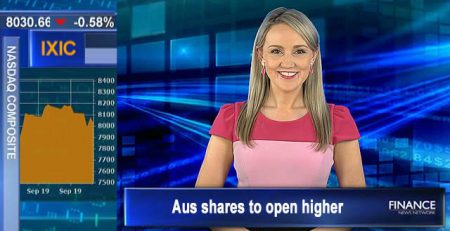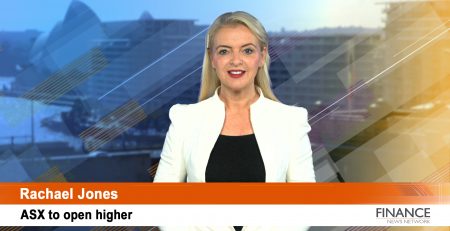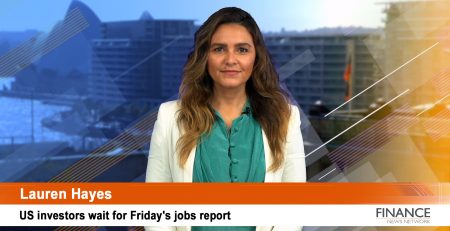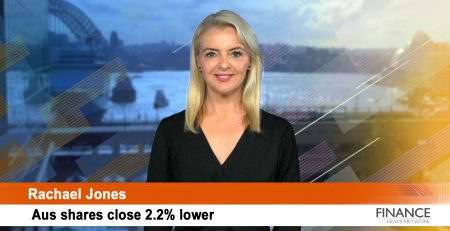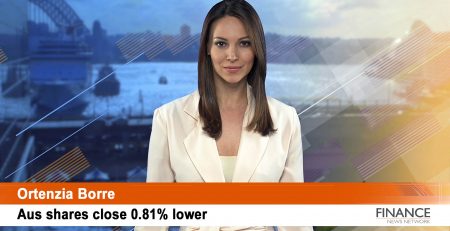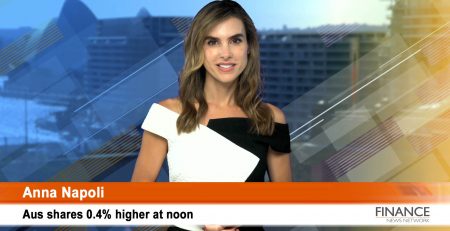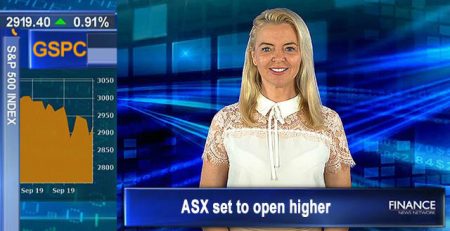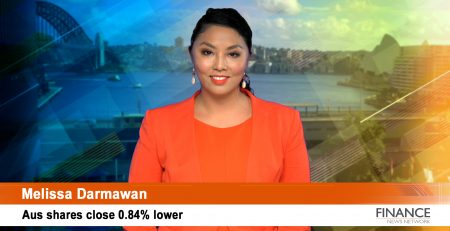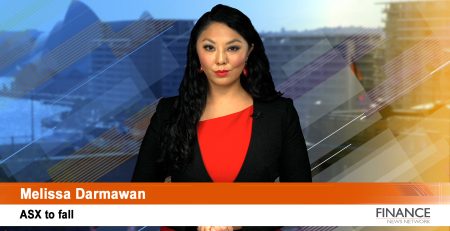Gold hits US$2,000 as Dow enters correction territory: ASX to open flat
Red sea across major indexes around globe amid the US and allies mulling on a ban on energy imports from Russia, pushing oil prices to an intraday high amid Germany voicing opposition to the embargo. Gold broke through US$2,000 mark.
Good morning. I’m Melissa Darmawan for Finance News. This is your market outlook.
The Australian sharemarket is set to open flat.
S&P 500 sinks to worst close since October 2020
In the red, risk-off as US stocks closed at session lows, investors eyed surging energy costs, slower growth and uncertainty over the war in Ukraine. Market participants are monitoring the White House's response to Russia as Washington determines whether to go solo or not, banning Russian oil imports.
Investors piled into safe havens, buying the greenback with treasuries earlier in focus, though traders ended up moving into the yellow precious metal. After investors bought into US treasuries, they ended up selling which saw the yield dip. Why? If inflation is set to climb, it means that pricing pressures could be around for longer and more persistent than we thought.
Oil is a global commodity, large input
What we do know is that volatility is likely to stay for the coming weeks or month, as anything beyond that is hard to see given the situation. In the bigger scheme of things, Russia’s economy ranks 11th in a global sense, but the price of oil is a global commodity and that is a large input into the global economy.
With the moves we have seen, it is starting to be apparent that the market is pricing in upside inflation risks and potential downside growth risks to the surge in oil. This takes the attention amid the talks from central bankers, and now a geopolitical event that is set to have lasting negative impacts where there is no clear advantage for anyone.
Yes, a lot of talk on the oil front but when it comes to soft commodities like wheat, if farmers in Ukraine don’t start planting soon, what could be imminent is a huge food crisis in the years to come. to give more colour on this, it means that the lesser availability of fuel, fertilisers, workers, and higher prices for these inputs, leads to lower crop output, which is what we are set to see in eastern Europe.
Meaning of Ukraine’s flag colours
Yes, a lot of talk on the oil front but when it comes to soft commodities like wheat, if farmers in Ukraine don’t start planting soon, what could be imminent is a huge food crisis in the years to come. From fields to processing plants to ports, this sector is very large in Ukraine and they ship crops across the globe. The sector is so important to the country’s identity that its flag depicts blue skies over yellow fields.
Technology rout continues, energy soars
Equities extended losses after a bipartisan bill started to see further traction to ban Russian energy imports, amid a third round of talks between Russia and Ukraine that didn't see a truce unfold. The moves are really pronounced in European markets as they were working on reducing its Russian energy reliance, but these things take time, so the timing of this all hasn’t helped with this focus.
So the question is, when does rising energy costs crimp demand and have a deflationary effect? How high will the price of oil go? Will the 2022’s stagflation definition lead to a technical recession? All this weighs on investors' minds as we see a red market across the globe.
Figures around the globe
At the closing bell, the Dow Jones lost 2.4 per cent to 32,817, the S&P 500 fell almost 3 per cent to 4,201 for its worst close since Oct 2020, while the Nasdaq closed 3.6 per cent lower at 12,831.
Across the S&P 500 sectors, energy and utilities were the clear winners, and continued to be given the surge in the oil price, up 1.6 and 1.3 per cent, respectively. The rest closed lower with consumer discretionary as the worst performer, as disposable income is set to buy less with technology stocks in the top losers, down 3.7 per cent.
The yield on the 10-year treasury note rose 6 basis points to 1.78 per cent, gold rose on a stronger greenback.
Across the Atlantic, European markets closed lower as banks in the zone tumbled up to 10 per cent. Concerns about the potential ban on Russian oil imports meant that banks who would provide funding are set to see a hit on their margins.
Paris lost 1.3 per cent, Frankfurt fell almost 2 per cent and London’s FTSE dipped 0.4 per cent offset by gains by oil majors. BP added 3.8 per cent while Shell jumped 8.1 per cent after confirming it had "no alternative" but to buy Russian oil.
Asian markets closed lower. Tokyo’s Nikkei fell 2.9 per cent, Hong Kong’s Hang Seng lost 3.9 per cent dragged down by tech shares, while China’s Shanghai Composite dropped 2.2 per cent.
Yesterday, the Australian sharemarket closed over 1 per cent lower at 7,039 with only energy and materials as the winner while the rest closed lower, led by information technology, and healthcare.
Companies that are set to lose its spot as part of the S&P’s quarterly index rebalance include Block (ASX:SQ2), tanking 10.3 per cent to $137.28, Unibail-Rodamco-Westfield (ASX:URW) fell 9.5 per cent to $4.21, and they were the two biggest losers of the session.
The winner of the session was Woodside Petroleum (ASX:WPL), closing 9.5 per cent higher at $34.41, followed by shares in Ramelius Resources (ASX:RMS), and IGO (ASX:IGO).
SPI futures
Taking all of this into the equation, the SPI futures are flat.
Local economic news
Today we will get a glimpse of where sentiment is at with ANZ and Roy Morgan set to release its weekly consumer sentiment figures while the National Australia Bank has its business sentiment survey for February due.
Looking backwards, sentiment has been weak in the past month, so it will be interesting to see if we might see a rebound today if consumers are focusing on the growth of the economy over the situation with Ukraine and any rate hike by the RBA.
Stockwatch
Our weekly stock to watch this week is Johns Lyng Group (ASX:JLG). David Thang, Senior Private Wealth Adviser at Sequoia (ASX:SEQ) rates Johns Lyng as a buy. From a technical angle, Johns Lyng ticks a number of boxes.
Since printing a high of $9.25 in January, the share price of Johns Lyng entered a corrective phase, and declined by 26.27 per cent to touch a recent low of $6.82 in late February.
Positively, support was respected at the 61.8 per cent Fibonacci retracement of $6.82 as shown by the horizontal green line and orange up arrow on the chart. Despite the broader market selloff, Johns Lyng has been able to buck the trend and trade higher.
Should upward traction continue over the months ahead, then a retest of the January high of $9.25 and beyond could potentially be in the making. Adding to the bull case is the upward sloping blue line. This line shows the median forward looking 12-month valuation rising.
Shares in Johns Lyng Group (ASX:JLG) closed 1.7 per cent higher to $7.70 yesterday.

IPOs
We have one company set to make its debut today. Keep an eye out for US Student Housing REIT (ASX:USQ). They are a company, managing a portfolio of student housing real estate assets in the United States after raising $45 million.
Ex-dividend
There are several companies going ex-dividend today.
CTI Logistics (ASX:CLX) is paying 2.5 cents fully franked
Ellerston Asian (ASX:EAI) is paying 3 cents fully franked
Iluka Resources (ASX:ILU) is paying 12 cents fully franked
Lynch Group Holdings (ASX:LGL) is paying 6 cents fully franked
Lovisa Holdings (ASX:LOV) is paying 37 cents 30 per cent franked
Mader Group (ASX:MAD) is paying 2 cents fully franked
PSC Insurance (ASX:PSI) is paying 4.5 cents 70 per cent franked
Qube Holdings (ASX:QUB) is paying 3 cents fully franked
Sonic Healthcare (ASX:SHL) is paying 40 cents fully franked
Smartgroup Corporation (ASX:SIQ) is paying 49 cents fully franked
Servcorp (ASX:SRV) is paying 10 cents unfranked
TPC Consolidated (ASX:TPC) is paying 3 cents fully franked
Veem (ASX:VEE) is paying 0.07 cents unfranked
Dividend-pay
There are six companies set to pay eligible shareholders their dividends.
Gryphon Capital Income Trust (ASX:GCI)
Magellan Financial Group (ASX:MFG)
Metrics Income Opportunities Trust (ASX:MOT)
Metrics Master Income Trust (ASX:MXT)
Vicinity Centres (ASX:VCX)
Zimplats Holdings (ASX:ZIM)
Commodities
Iron ore has gained 6.8 per cent to US$162.75. Its futures point to a 1.1 per cent gain amid China lowering their 2022 growth forecast to 5.5 per cent. This is a positive move for iron ore/steel markets coming from China focusing their key priority for 2022 on "economic stability".
Gold has gained $33.70 or 1.7 per cent to US$2000 an ounce. Silver is up $0.03 or 0.1 per cent to US$25.82 an ounce.
Oil has gained $3.93 or 3.4 per cent to US$119.61 a barrel.
Nickel prices have surged around 60 per cent to a record high US$21.85 a pound. The jump in pricing comes due to a short supply with decreased selling activity, limiting liquidity in the market.
Currencies
One Australian Dollar at 8:25 AM has weakened from yesterday, buying 73.15 US cents (Mon: 73.67 US cents), 55.83 Pence Sterling, 84.34 Yen and 67.35 Euro cents.
Disclaimer
The views, opinions or recommendations of the commentators in this presentation are solely those of the author and do not in any way reflect the views, opinions, recommendations, of Sequoia Financial Group Limited ABN 90 091 744 884 and its related bodies corporate (“SEQ”). SEQ makes no representation or warranty with respect to the accuracy, completeness or currency of the content. Commentators may hold positions in stocks mentioned. The content is for educational purposes only and does not constitute financial advice. Independent advice should be obtained from an Australian Financial Services Licensee before making investment decisions. To the extent permitted by law, SEQ excludes all liability for any loss or damage arising in any way including by way of negligence.
Copyright 2022 – Finance News Network
Source: Finance News Network

